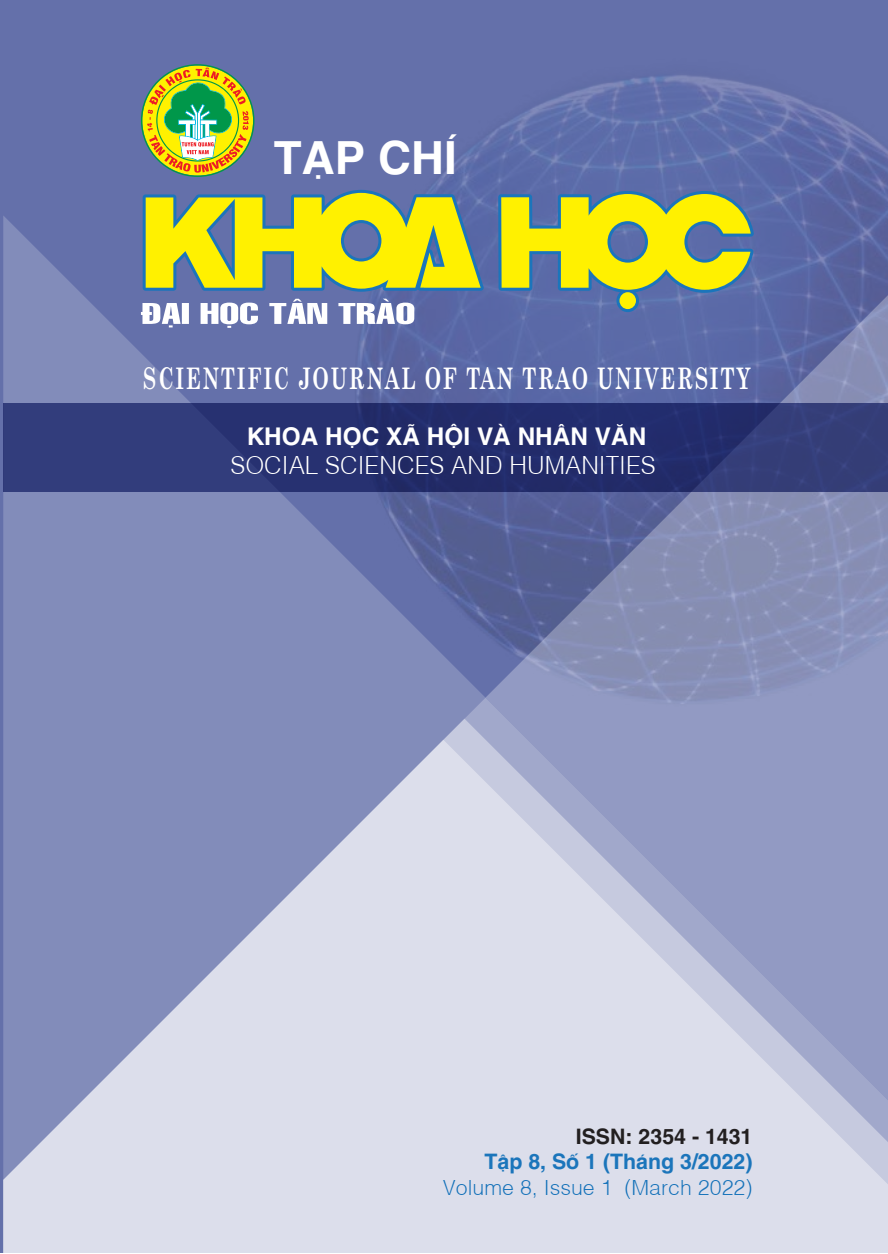GIÁ TRỊ TẤM VĂN BIA BẢO NINH SÙNG PHÚC TỰ BI TẠI CHÙA BẢO NINH SÙNG PHÚC HUYỆN CHIÊM HÓA, TỈNH TUYÊN QUANG
DOI:
https://doi.org/10.51453/2354-1431/2022/725Từ khóa:
Văn bia, Phong kiếnTóm tắt
Tuyên Quang là tỉnh thuộc miền núi phía Bắc nước ta, đây cũng là địa bàn cư trú của nhiều dân tộc anh em. Tuyên Quang có vị trí chiến lược quan trọng về kinh tế, chính trị, quốc phòng và an ninh. Đây cũng là vùng đất có bề dầy văn hóa, lịch sử. Hiện nay, tại chùa Bảo Ninh Sùng Phúc nằm tại thôn Làng Tạc, xã yên Nguyên, huyện Chiêm Hóa, tỉnh Tuyên Quang còn giữ tấm bia đá cổ đặc biệt được khắc dưới thời nhà Lý (1009-1400). Tấm văn bia Bảo Ninh Sùng Phúc tự bi là 1 trong 18 văn bia chùa Phật trong nước và là tấm bia được khắc sớm nhất tại các tỉnh miền núi phía Bắc còn được lưu giữ nguyên vẹn đến ngày nay[1]. Đây là tấm văn bia mang giá trị lớn về văn học, văn hóa và lịch sử.
[1] Theo Viện Nghiên cứu Phật học Việt Nam, Văn bia chùa Phât thời Lý, Nhà xuất bản Khoa học xã hội Hà Nội năm 2011, tr15.
Tải xuống
Tài liệu tham khảo
[1] Propaganda Department of Tuyen Quang Provincial Party Committee (2018), Dictionary of Tuyen Quang places, National Political Publishing House, Hanoi.
[2] Tuyen Quang Museum, Biography of Bao Ninh Sung Phuc Pagoda relic, Lang Tac village, Yen Nguyen commune, Chiem Hoa, Tuyen Quang province. The first time was on February 22, 1997 (Biography of relic I) and the second time on November 29, 2005 (Biography of relic II).
[3] Thuan,D.K. (2011), Epitaph of Buddha Temple in Ly Dynasty, Culture and Information Publishing House, Hanoi..
[4] Dung,H.T.T. Contribution of Vice President Ha Di Khanh to the national history of the XI-XII centuries, Science journal of Tan Trao University, No. 16 (June 2020).
[5] Vietnam Institute of Buddhist Studies (2011), Epitaph of Buddhist Pagoda in Ly Dynasty, Hanoi Social Science Publishing House, Hanoi.
Tải xuống
Đã Xuất bản
Cách trích dẫn
Số
Chuyên mục
Giấy phép

Tác phẩm này được cấp phép theo Giấy phép Quốc tế Creative Commons Attribution-ShareAlike 4.0 .
Bài báo được xuất bản ở Tạp chí Khoa học Đại học Tân Trào được cấp phép theo giấy phép Ghi công - Chia sẻ tương tự 4.0 Quốc tế (CC BY-SA). Theo đó, các tác giả khác có thể sao chép, chuyển đổi hay phân phối lại các bài báo này với mục đích hợp pháp trên mọi phương tiện, với điều kiện họ trích dẫn tác giả, Tạp chí Khoa học Đại học Tân Trào và đường link đến bản quyền; nêu rõ các thay đổi đã thực hiện và các nghiên cứu đăng lại được tiến hành theo cùng một bản quyền.
Bản quyền bài báo thuộc về các tác giả, không hạn chế số lượng. Tạp chí Khoa học Tân Trào được cấp giấy phép không độc quyền để xuất bản bài báo với tư cách nhà xuất bản nguồn, kèm theo quyền thương mại để in các bài báo cung cấp cho các thư viện và cá nhân.
Mặc dù các điều khoản của giấy phép CC BY-SA không dành cho các tác giả (với tư cách là người giữ bản quyền của bài báo, họ không bị hạn chế về quyền hạn), khi gửi bài tới Tạp chí Khoa học Đại học Tân Trào, tác giả cần đáp ứng quyền của độc giả, và cần cấp quyền cho bên thứ 3 sử dụng bài báo của họ trong phạm vi của giấy phép.






